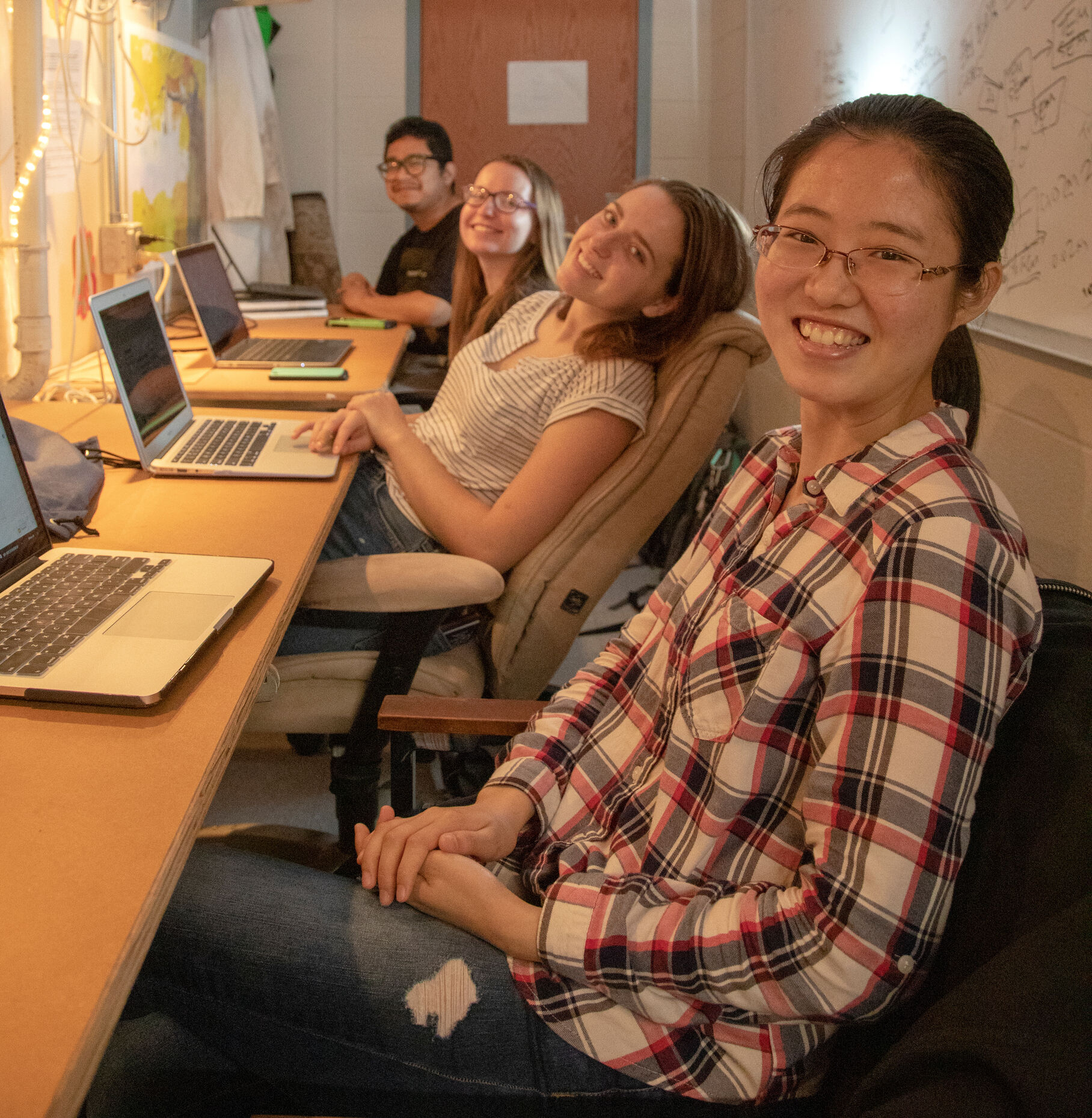F&M Stories
Research Fair: Senior Dives Deeply Into Nanoworld
Too tiny for the human eye, nanoparticles influence nearly every aspect of our lives.
Franklin & Marshall College senior Huiyan Anna Xiong certainly knows a thing or two about the nanoworld. Her recent chemistry research explores the impact of altering nanorods for useful applications.
Under the direction of Associate Professor of Chemistry Kate Plass, Xiong's work in nanoparticles (objects one billionth the size of a meter), sought to better understand and control the conversion of copper sulfides into cadmium sulfides.
Xiong's research, which several F&M students assisted, has been published in the peer-reviewed journal ACS Materials Letters.
Her poster on the topic, presented at the American Chemical Society national meeting earlier this year, was selected for the SciMix session because it was among the top 10 percent of entries.
Before cation exchange, a copper sulfide nanoparticle is good at absorbing solar energy but can't do anything with it, explained Plass.
"Once we do cation exchange, the particle becomes a tiny solar cell capable of absorbing solar energy and transforming it into other forms of energy," Plass said.
Xiong's research confirmed that pre-treating nanorods with an oxidizing iodine molecule activates cation exchange and expedites the conversion. This process can help convert solar energy into electricity, among other practical applications.
"We hypothesized that when iodine extracts copper from copper sulfide nanorods by forming copper iodide, this will open up more spaces for cations to be exchanged, and thus, accelerate the cation exchange," Xiong said.
To compare the rate of exchange, Xiong tracked the position and percentage of cadmium incorporated for iodine-treated and untreated nanorods.
Xiong continues to study nanoparticle exchange using a similar approach.
"I was working on another similar topic, but instead of cation exchange, I was focusing on accelerating the anion exchange — which exchanges sulfide in the nanoparticles with tellurium — by iodine treatments," she said.
A former member of Asian Cultural Society, Cooking Club, and Japanese Club, Xiong was initially drawn to F&M for the "close community" and natural sciences program. Her research opportunity was serendipitous.
"At the time, I hadn't taken inorganic chemistry or any related courses to this project. But, I felt like I should try something other than organic chemistry, and nanoparticles sounded really cool," Xiong said.
She is the recipient of the Fred A. Snavely Research Award, presented to a senior chemistry major who has previously participated in the summer research program.
Completing her final semester online from China, Xiong is exploring options for graduate school and careers in science.
She reflects fondly on her time in the laboratory and encourages students to pursue research regardless of academic background.
"Research experience is the best part of my college life," Xiong said. "No need to be concerned about your knowledge level in chemistry."
Related Articles
May 3, 2024
Senior Spotlight: Rachel Rubins
Between F&M Mock Trial team, sorority life and Hillel, senior Rachel Rubins “found a support system of friends I see as family.” She also discovered a passion for history. See what advice Rachel has for incoming students.
April 25, 2024
Senior Class to Gather at May 11 Commencement
Members of Franklin & Marshall’s Class of 2024 will be honored during Commencement May 11 in the College's Alumni Sports & Fitness Center (ASFC).
April 22, 2024
Embracing "And": Junior Genab Diallo on the Liberal Arts Experience
The ampersand in the middle of our College's name symbolizes the rich space of possibility that awaits students at F&M. For Junior Genab Diallo, the freedom to explore classes across disciplines helped her discover her passion.

